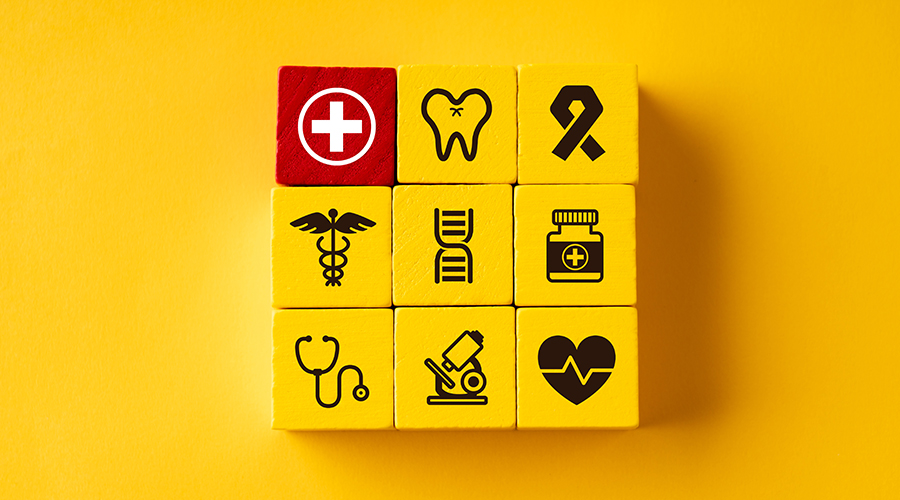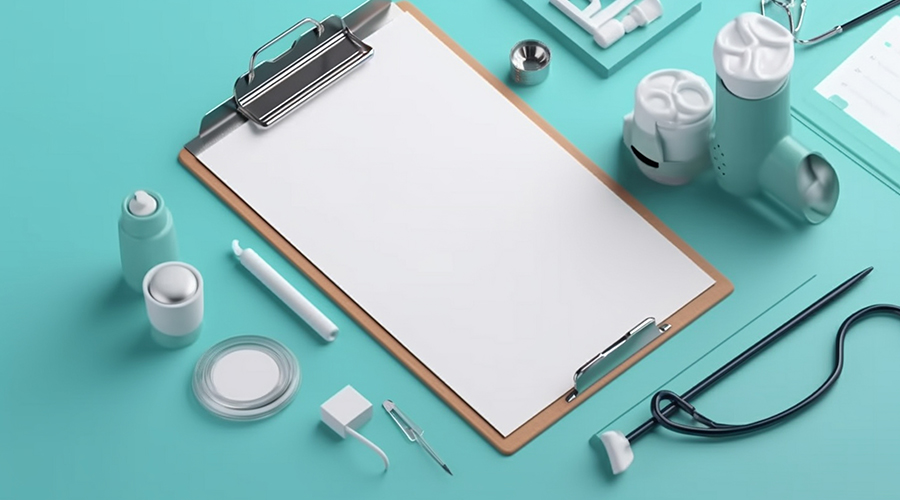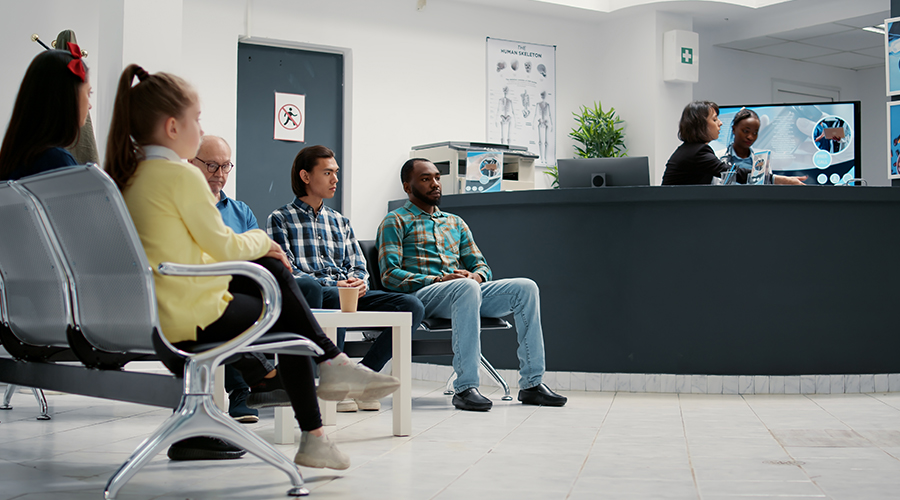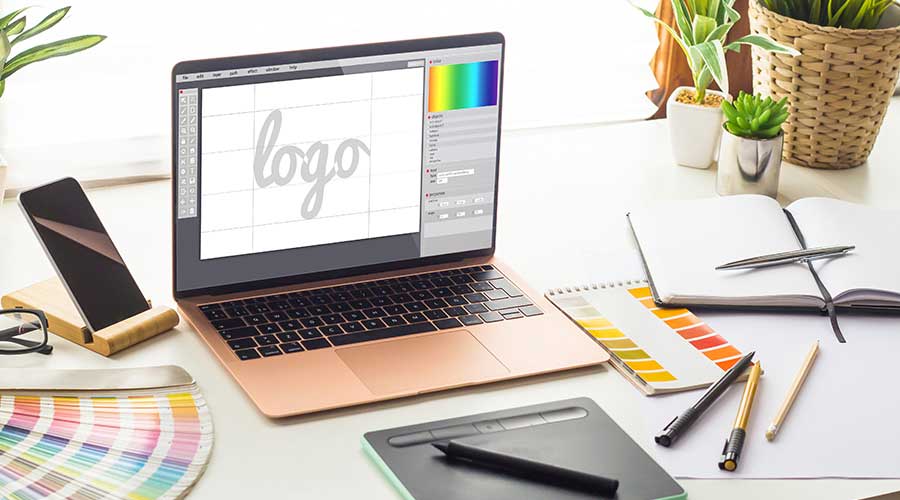Medical Logo Design Ideas
Medical Logo Design Ideas Inspiring Visual Identities for Healthcare Brands: In the fast-paced world of healthcare, effective design plays a crucial role in shaping the perception of medical practices and services. From logos and brochures to websites and apps, creative medical design ideas are essential for establishing a distinctive brand identity and enhancing user experience. In this article, we will explore a diverse array of innovative medical design concepts that redefine how the industry communicates and connects with patients.
Creative Medical Logo Design Ideas
A strong medical logo is the foundation of any healthcare brand. Embrace creativity by incorporating elements that reflect your speciality, such as a heart for cardiology or a stylized microscope for research. Play with vibrant colours and elegant typography to evoke a sense of trust and compassion.
Healing through Design: 10 Medical Logo Design Ideas to Inspire Your Practice

A compelling medical logo serves as a visual representation of your practice’s values and mission. In the healthcare industry, where trust and credibility are paramount, a creative and innovative logo can make a significant impact on patients and professionals alike. In this article, we will explore ten inspiring medical logo design ideas that seamlessly blend creativity with symbolism, setting your practice apart in the competitive healthcare landscape.
1 – Nature-Inspired Elegance
Incorporate elements from nature, such as leaves, waves, or mountains, to convey a sense of healing and harmony. These organic shapes not only evoke a feeling of calm but also symbolize growth and renewal.
2 – Simplistic Stethoscope Icon
The stethoscope is an iconic symbol of the medical profession. Create a modern twist on this classic image with clean lines and bold colours, representing professionalism and expertise.
3 – Human Heart Imagery
A heart symbolizes life, care, and compassion. Integrate a stylized heart into your logo design, signifying your dedication to patients’ well-being and emotional support.
4 – Geometric Precision
Embrace geometric shapes to convey precision and accuracy in your medical practice. Utilize triangles, circles, or hexagons to illustrate expertise and a scientific approach to healthcare.
5 – Dynamic Cross Symbol
Incorporate a dynamic cross into your logo design to represent healing and hope. Customize the cross with vibrant colours and gradients for a contemporary look.
6 – Artistic DNA Strand
For genetics or research-focused practices, an artistic DNA strand can be a captivating and symbolic logo element. Showcase innovation and progress in the medical field with this intriguing design.
7 – Caduceus with a Modern Twist
The caduceus, a symbol of medicine, can be reimagined with a modern twist. Add unique design elements, like intricate patterns or gradients, to create an eye-catching and distinctive logo.
8 – Serene Lotus Flower
The lotus flower symbolizes purity and resilience. Use this elegant flower in your logo design to express your commitment to providing holistic and compassionate healthcare.
9 – Playful Character Mascot
Introduce a friendly and approachable character mascot to your logo design. A mascot can inject warmth and personality into your branding, making it more relatable to patients of all ages.
10 – Abstract Wellness Symbol
Create an abstract symbol that represents wellness and vitality. Abstract logos allow for artistic interpretation and can embody a broad range of healthcare specialities.
A well-designed medical logo communicates your practice’s values and establishes a strong brand identity. From nature-inspired elements to modern twists on classic symbols, the possibilities for creative medical logos are endless. Consider the essence of your practice and your target audience as you explore these design ideas. Remember, a captivating and unique logo will not only make a lasting impression on patients but also reinforce your dedication to providing exceptional care in the medical field.

2. Innovative Medical Brochure Designs
Brochures are an effective tool for disseminating vital information about medical services. Infuse innovation into your brochures with interactive elements, such as QR codes that link to online resources or augmented reality (AR) features for immersive experiences.
Transforming Healthcare: Innovative Medical Brochure Designs
Medical brochures are powerful communication tools that play a pivotal role in educating patients, promoting medical services, and building trust within the healthcare industry. In today’s digital age, standing out from the crowd requires innovative and captivating brochure designs that engage and inform audiences effectively. In this article, we will explore cutting-edge medical brochure designs that harness creativity and technology to revolutionize healthcare communication.
1 – Interactive Augmented Reality (AR) Brochures
Integrate augmented reality (AR) technology into your medical brochures to create an immersive and interactive experience for readers. With a simple scan of a smartphone or tablet, patients can access virtual tours of medical facilities, view 3D anatomical models, and experience patient testimonials firsthand.
2 – Personalized Patient Journey Maps
Design patient journey maps that guide individuals through their healthcare experiences in a personalized way. Tailor the content and design to specific medical conditions or treatments, ensuring patients feel informed and empowered throughout their healthcare journeys.
3 – Video-Infused E-Brochures
Combine the power of video with traditional brochure formats by incorporating QR codes or embedded videos that showcase medical procedures, introduce healthcare specialists, and offer patient testimonials. Video-infused e-brochures capture attention and provide in-depth information seamlessly.
4 – Interactive Infographics for Health Education
Use interactive infographics to simplify complex medical information and engage patients in their health education. Interactive elements allow patients to explore medical statistics, treatment options, and preventive measures, promoting a deeper understanding of health-related topics.
5 – Multi-Language Flip Brochures
Create inclusive medical brochures with multi-language flip designs. These brochures cater to diverse patient populations by featuring different languages on each side, ensuring effective communication and inclusivity.
6 – Wellness-Themed Pop-Up Brochures
Design wellness-themed pop-up brochures that visually depict the journey to better health. Utilize pop-up elements to showcase before-and-after images, highlight health milestones, and illustrate the benefits of medical treatments and lifestyle changes.
7 – Eco-Friendly Sustainable Brochures
Embrace sustainability and eco-consciousness by using recycled materials for your medical brochures. Showcase your commitment to environmental responsibility while delivering essential healthcare information to patients.
8 – Gamified Educational Brochures
Gamify medical education with interactive brochures that incorporate quizzes, puzzles, and challenges. Engaging patients in a playful learning experience makes health information more memorable and enjoyable.
Medical Logo Design Ideas: Innovative medical brochure designs are revolutionizing healthcare communication, offering a dynamic and engaging way to inform and connect with patients. From AR-infused brochures to wellness-themed pop-ups, these creative designs elevate patient education and foster a stronger patient-provider relationship. Embrace the power of technology, personalization, and sustainability as you embark on designing innovative medical brochures that redefine healthcare communication in the modern world.

3. Effective Medical Website Design Strategies
A well-designed medical website is more than just a digital presence; it is a gateway to patient care. Employ user-friendly navigation, clear call-to-actions, and personalized content to create a seamless experience for patients seeking information and booking appointments.
Crafting Online Health: Effective Medical Website Design
Medical Logo Design Ideas: In the digital age, a well-designed medical website is the cornerstone of a successful healthcare practice. With patients increasingly seeking healthcare information and services online, an effective website serves as a virtual front door to your practice. In this article, we will explore essential medical website design strategies that elevate user experience, build trust, and foster a strong online presence for healthcare providers.
1 – User-Centric Navigation
Simplify navigation to ensure patients can find information quickly and intuitively. Utilize clear and concise menu options, allowing users to access key sections like services, patient resources, and contact details effortlessly.
2 – Mobile-Friendly Responsiveness
Optimize your medical website for mobile devices to cater to the growing number of users accessing healthcare information on their smartphones and tablets. Responsive design ensures seamless viewing and interaction across various screen sizes.
3 – Emphasis on Patient Testimonials
Feature genuine patient testimonials that showcase positive experiences and outcomes. Patient testimonials build credibility and trust, encouraging prospective patients to choose your practice for their healthcare needs.
4 – Secure Patient Portal Integration
Incorporate a secure patient portal for appointment scheduling, medical records access, and secure messaging. This enhances patient engagement and convenience while ensuring confidentiality.
5 – Accessible Content for All Audiences
Ensure your medical website is accessible to all users, including those with disabilities. Follow accessibility guidelines to accommodate individuals with visual or hearing impairments, making healthcare information inclusive for everyone.
6 – Engaging Visuals and Multimedia
Incorporate high-quality images and videos to visually convey your practice’s atmosphere, services, and expertise. Multimedia elements engage visitors and provide them with a glimpse of the personalized care they can expect.
7 – HIPAA-Compliant Privacy Measures
Highlight your commitment to patient privacy by showcasing HIPAA compliance and security measures. Assure patients that their personal health information is protected and handled with utmost confidentiality.
8 – Clear Calls-to-Action (CTAs)
Strategically place clear and compelling CTAs throughout your website to prompt visitors to take specific actions, such as booking appointments, subscribing to newsletters, or accessing educational resources.
9 – Comprehensive Health Resources
Create a comprehensive health resources section with informative articles, infographics, and educational content. Empower patients to make informed decisions about their health and well-being.
10 – Social Media Integration
Integrate social media buttons to encourage patients to connect with your practice on platforms like Facebook, Twitter, and Instagram. Social media engagement helps build a sense of community and fosters ongoing patient-provider interactions.
Medical Logo Design Ideas: Effective medical website design is crucial for creating a seamless and informative online healthcare experience. By prioritizing user-centric navigation, mobile responsiveness, and patient testimonials, healthcare providers can build trust, attract new patients, and retain existing ones. Additionally, features like secure patient portals, multimedia elements, and accessible content enhance the overall website experience and contribute to the success of your healthcare practice in the digital era. With these strategies in place, healthcare providers can confidently connect with patients online, ensuring a positive and impactful virtual journey for their medical needs.

4. Modern Medical Stationery Design Inspiration
From business cards to letterheads, stationery design should exude professionalism and modernity. Opt for clean, minimalist layouts and utilize your logo and brand colours consistently across all materials to reinforce brand recognition.
Designing Wellness: Modern Medical Stationery Brilliance
Medical Logo Design Ideas: In the healthcare industry, a modern and cohesive stationery design plays a crucial role in reinforcing a professional and trustworthy image for medical practices. From business cards to letterheads, stationery serves as a tangible representation of your brand. In this article, we will explore modern medical stationery design inspiration that reflects innovation, reliability, and care, setting your practice apart in a competitive healthcare landscape.
1 – Clean and Minimalistic Business Cards
Embrace clean lines, muted colours, and minimalist typography for your business cards. A clutter-free design exudes professionalism and allows your contact details and logo to take centre stage.
2 – Contemporary Letterhead Layouts
Opt for contemporary letterhead layouts that incorporate ample white space, consistent branding elements, and a touch of colour. A well-designed letterhead enhances your brand’s recognition and leaves a lasting impression on recipients.
3 – Stylish Appointment Reminder Cards
Design appointment reminder cards that are not only practical but also visually appealing. Integrate your brand’s colour palette and logo into the design, making these cards an extension of your healthcare practice’s identity.
4 – Modern Prescription Pad Designs
Revamp your prescription pads with modern designs that feature your logo and branding elements. Incorporate subtle patterns or gradients to add visual interest while maintaining a professional appearance.
5 – Innovative Envelope Concepts
Opt for innovative envelope designs that complement your stationery set. Consider incorporating a branded seal or unique envelope flap to make your mail stand out in the recipient’s mailbox.
6 – Consistent Email Signatures
Extend your stationery design to your email signatures by including your logo, contact information, and professional closing. A consistent email signature reinforces your brand identity in digital communications.
7 – Branded Notepads and Sticky Notes
Customize notepads and sticky notes with your medical practice’s logo and tagline. These branded stationery items are not only useful for internal purposes but also serve as promotional tools when used by patients or staff.
8 – Calming Thank You Cards
Create calming and empathetic thank you cards that express gratitude to patients and partners. Personalized notes add a human touch to your practice’s communications and leave a positive impression on recipients.
9 – Eco-Friendly Stationery Solutions
Demonstrate your commitment to sustainability by opting for eco-friendly stationery materials. Recycled paper and eco-conscious printing contribute to your practice’s environmental responsibility.
10 – Innovative Digital Letterheads
Consider creating digital letterhead templates that can be easily used for electronic communications and documentation. Digital letterheads maintain your professional branding across both printed and digital interactions.
Medical Logo Design Ideas: Modern medical stationery design is an essential aspect of healthcare branding that reinforces your practice’s identity and values. From clean and minimalistic business cards to eco-friendly solutions, each stationery element should align with your brand’s vision and resonate with patients and partners alike. By embracing contemporary design trends and innovative approaches, your medical practice can create a lasting impression and build trust in the hearts of patients, elevating healthcare branding to new heights.

5. User-Friendly Medical App Design Tips
Mobile apps have revolutionized healthcare access. Prioritize user-friendliness by organizing information logically and integrating features such as appointment booking, prescription refill requests, and telemedicine options for enhanced convenience.
Patient-Centric App Design: Seamless Medical Experiences
In the digital age, medical apps have transformed patient engagement and healthcare accessibility. To succeed in this competitive landscape, it’s essential to prioritize user-friendly medical app design. A well-designed app not only improves patient experience but also fosters better adherence to treatment plans and boosts patient satisfaction. In this article, we will explore essential user-friendly medical app design tips to create a seamless and positive user experience.
1 – Intuitive Navigation
Ensure the app’s navigation is intuitive and easy to understand. Implement a clear and logical menu structure, allowing users to access different features and sections effortlessly.
2 – Streamlined Registration Process
Simplify the app’s registration process to minimize user friction. Offer multiple sign-up options, such as social media logins or email registration, and collect only essential information to get users started quickly.
3 – Personalized User Profiles
Create personalized user profiles that enable patients to customize their app experience. Incorporate features like appointment history, health records, and personalized notifications to cater to individual needs.
4 – Clear and Concise Content
Present medical information clearly and concisely. Use simple language and visuals to communicate complex medical concepts effectively.
5 – Seamless Appointment Booking
Implement a user-friendly appointment booking system with real-time availability updates. Allow patients to book, reschedule, or cancel appointments with ease, reducing administrative burden for both patients and healthcare providers.
6 – Secure Data Handling
Prioritize data security and privacy throughout the app. Ensure compliance with healthcare regulations and industry standards to protect sensitive patient information.
7 – Visual Cues and Feedback
Incorporate visual cues and feedback to guide users through app interactions. Use animations, progress indicators, and tooltips to provide a seamless and reassuring user experience.
8 – In-App Notifications
Implement in-app notifications to keep patients informed about appointment reminders, test results, and important updates. Customize notification preferences to respect users’ communication preferences.
9 – Accessibility Features
Ensure the app is accessible to users with disabilities. Offer features like voice commands, large fonts, and high-contrast settings to accommodate a diverse range of users.
10 – Regular App Updates and Bug Fixes
Regularly update the app to introduce new features, fix bugs, and improve performance. Engage with user feedback to enhance the app’s usability continuously.
Medical Logo Design Ideas: Designing a user-friendly medical app is crucial for enhancing the patient experience and ensuring the successful adoption of digital healthcare solutions. By prioritizing intuitive navigation, streamlined registration, and personalized user profiles, healthcare providers can create apps that empower patients to take control of their health journey. Implementing visual cues, in-app notifications, and accessibility features further contributes to a seamless and inclusive app experience. As healthcare technology continues to evolve, user-friendly medical app design will remain the key to driving patient engagement and revolutionizing the way patients access and manage their healthcare needs.

6. Unique Medical Packaging Design Solutions
Medical packaging should be both functional and visually appealing. Consider eco-friendly materials and innovative designs that ensure product safety while conveying trust and care.
Revolutionizing Safety: Unique Medical Packaging Design
Medical Logo Design Ideas: In the medical industry, packaging design goes beyond aesthetics – it plays a crucial role in safeguarding product integrity, ensuring patient safety, and enhancing brand recognition. Unique medical packaging design solutions offer innovative approaches that not only protect medical products but also create a positive patient experience. In this article, we will explore the significance of unique medical packaging and unveil creative solutions that revolutionize the packaging landscape in the healthcare sector.
1 – Patient-Centric Packaging
Craft packaging solutions with patients in mind, considering their convenience and ease of use. Incorporate user-friendly features like easy-open seals, colour-coded labels, and clear instructions to enhance patient compliance and minimize errors.
2 – Sustainable and Eco-Friendly Materials
Embrace eco-consciousness by adopting sustainable materials for medical packaging. Biodegradable, recyclable, and compostable materials not only benefit the environment but also resonate with patients who prioritize eco-friendly choices.
3 – Tamper-Proof Security Measures
Implement tamper-proof seals and security features to assure patients of product authenticity and safety. Tamper-evident packaging boosts patient trust and confidence in the quality of medical products.
4 – Innovative Dosage Management
Introduce innovative dosage management systems in medical packaging to simplify medication administration for patients. Unit-dose packaging, blister packs, and smart packaging with integrated dosing reminders enhance medication adherence.
5 – Multi-Language Labeling
Adopt multi-language labelling to cater to diverse patient populations. Clear and concise labelling in multiple languages ensures that patients have access to essential information regardless of their language proficiency.
6 – Interactive Augmented Reality (AR) Packaging
Leverage augmented reality (AR) technology to provide patients with interactive experiences through packaging. AR-enhanced packaging can offer product information, video instructions, and virtual tours of medical devices, enhancing patient education.
7 – Child-Resistant Packaging
For medications and products intended for pediatric use, incorporate child-resistant packaging to prevent accidental ingestion and enhance child safety.
8 – Space-Saving Design
Design medical packaging with space-saving solutions to optimize storage and transportation. Compact and stackable designs reduce the waste of storage space and improve logistics efficiency.
9 – Customizable Packaging Solutions
Offer customizable packaging solutions to medical product manufacturers, allowing them to tailor packaging designs to specific product requirements and brand aesthetics.
10. Branded Packaging with QR Codes
Integrate branding elements and QR codes on medical packaging to promote brand recognition and enable patients to access additional product information through their smartphones.
Medical Logo Design Ideas: Unique medical packaging design solutions play a pivotal role in modern healthcare, combining functionality, safety, and patient experience. From patient-centric features and sustainable materials to innovative dosage management and interactive AR packaging, these solutions elevate medical packaging to new heights. As the healthcare industry continues to evolve, embracing creativity and innovation in medical packaging will not only ensure product safety but also enhance patient satisfaction and build strong brand loyalty. By prioritizing patient needs and leveraging cutting-edge technologies, medical packaging design becomes a powerful tool that fosters positive patient outcomes and revolutionizes the healthcare experience.
GraphicDigits: Shaping the future of medical branding through inspired logo designs! Transform your practice identity with logos that convey trust and innovation. Ready to make a distinctive mark? Contact us now and let your medical logo be a beacon of excellence in the industry.

7. Human-Centered Waiting Room Design
The waiting room is the first physical impression patients have of your practice. Create a warm and inviting atmosphere with comfortable seating, calming colours, and artwork that promotes relaxation.
Comfort Redefined: Human-Centered Waiting Room Design
Medical Logo Design Ideas: The waiting room is often the first point of contact for patients in a healthcare facility. A well-designed waiting room can set the tone for a positive patient experience, fostering feelings of comfort, relaxation, and confidence in the care they will receive. Human-centred waiting room design prioritizes patient needs and preferences, creating a welcoming environment that goes beyond aesthetics. In this article, we will explore the significance of human-centred waiting room design and unveil strategies to optimize patient comfort and experience.
1 – Comfortable Seating Arrangements
Provide comfortable and ergonomic seating options to accommodate patients of all ages and physical abilities. Consider using a mix of armchairs, sofas, and individual seats to cater to varying preferences.
2 – Natural Lighting and Views
Maximize natural light and provide views of the outdoors to create a calming atmosphere. Sunlight and greenery have a positive impact on patient mood and can alleviate stress.
3 – Privacy and Acoustic Control
Design the waiting room with privacy in mind, ensuring patients have personal space while maintaining a sense of openness. Implement acoustic control measures to reduce noise levels and enhance a peaceful environment.
4 – Patient-Centric Amenities
Offer patient-centric amenities such as charging stations for electronic devices, reading materials, and complimentary beverages to enhance patient comfort and satisfaction.
5 – Accessible Design
Ensure the waiting room is accessible to all patients, including those with disabilities. Install ramps, elevators, and wheelchair-friendly seating arrangements for inclusive and accommodating spaces.
6 – Biophilic Elements
Incorporate biophilic design elements, such as potted plants and natural textures, to bring the healing power of nature indoors. Biophilic design has been shown to reduce stress and promote well-being.
7 – Child-Friendly Spaces
Create designated areas for children with toys, books, and interactive elements to keep young patients engaged and entertained.
8 – Patient Information and Education
Display informative content, such as health tips, educational videos, and interactive displays, to empower patients and enhance health literacy.
9 – Thoughtful Art and Decor
Use art and decor that resonate with the local community and the facility’s mission. Thoughtful artwork can create a sense of connection and foster a positive emotional response in patients.
10 – Efficient Layout and Flow
Design a layout that promotes efficient patient flow, minimizing congestion and wait times. Clear signage and wayfinding aid patients in navigating the facility easily.
Medical Logo Design Ideas: Human-centred waiting room design is a vital aspect of patient-centric healthcare environments. By prioritizing patient comfort, privacy, and accessibility, healthcare facilities can create waiting areas that promote relaxation, alleviate anxiety, and enhance the overall patient experience. Thoughtful integration of natural elements, patient-centric amenities, and educational resources contributes to a positive and empowering environment for patients and their families. Ultimately, a well-designed waiting room sets the stage for a patient’s healthcare journey, making it a key component in delivering compassionate, patient-centred care.
GraphicDigits: Your partner in crafting iconic medical logos! Elevate your brand with designs that stand out in the healthcare realm. Ready for a logo that reflects your dedication to patient care and innovation? Contact us today and let your medical logo be a symbol of excellence.

8. Empowering Infographics for Patient Education
Simplify complex medical information with engaging infographics. Use illustrations and charts to educate patients about various conditions, treatments, and preventive measures.
Simplified Medical Insights: Empowering Infographics
Medical Logo Design Ideas: Infographics have emerged as a powerful tool in patient education, presenting complex medical information in a visually appealing and easily digestible format. These engaging visual aids empower patients to understand their health conditions, treatment options, and preventive measures effectively. In this article, we will explore the significance of empowering infographics for patient education and unveil how these dynamic visuals simplify medical information, enhancing patient comprehension and engagement.
1. Visual Storytelling
Infographics utilize visual storytelling to present medical concepts and information in a narrative format. Through a combination of icons, illustrations, and concise text, patients can grasp complex medical topics with greater ease and retain information better.
2. Simplification of Medical Jargon
Medical terminology can be overwhelming for patients, leading to confusion and frustration. Infographics simplify medical jargon, breaking down technical terms into easily understandable language that patients can relate to.
3. Step-by-Step Procedures
For patients undergoing medical procedures or treatments, infographics offer step-by-step guides that provide reassurance and clarity. Patients can follow the process visually, enhancing their preparedness and reducing anxiety.
4. Visualizing Health Statistics
Infographics effectively visualize health statistics, helping patients understand the risks, prevalence, and impact of medical conditions. By presenting data in a graphical format, patients can make informed decisions about their health.
5. Illustrating Treatment Options
For patients faced with treatment choices, infographics compare and illustrate various options, enabling patients to weigh the pros and cons and participate in shared decision-making with healthcare professionals.
6. Promoting Preventive Measures
Infographics highlight preventive measures and healthy lifestyle choices, empowering patients to take charge of their health and well-being.
7. Understanding Medication Instructions
Infographics simplify medication instructions, ensuring patients take prescribed medications correctly and adhere to treatment plans.
8. Communicating with Diverse Audiences
Infographics transcend language barriers and cater to diverse patient populations. With visual communication, patients of various cultures and languages can access vital health information.
9. Mobile Accessibility
In an era dominated by smartphones and digital devices, infographics are easily shareable and accessible on mobile platforms. Patients can access important health information at their convenience.
10. Reinforcement of Patient-Provider Communication
Infographics serve as valuable tools in patient-provider communication. Physicians can use infographics during consultations to enhance patient understanding and encourage active engagement in their care.
Medical Logo Design Ideas: Empowering infographics are revolutionizing patient education by making medical information more accessible and comprehensible. Through visual storytelling, simplification of medical jargon, and step-by-step illustrations, infographics empower patients to be active participants in their healthcare journey. By promoting preventive measures and improving health literacy, infographics play a crucial role in fostering informed decision-making and promoting patient well-being. As patient education continues to evolve, empowering infographics will remain an invaluable resource in improving healthcare outcomes and creating a more informed and engaged patient community. In the realm of healthcare, creative medical design ideas have the power to reshape patient experiences and bridge the communication gap between providers and their communities. From logos that evoke trust to user-friendly apps that empower patients, innovation in medical design is essential for navigating the modern healthcare landscape. Embrace creativity, empathy, and technology to transform your medical practice into a beacon of healing and care, as you design a future where the art of medicine meets the art of design.
Crafting healthcare identities, one logo at a time – choose GraphicDigits for a medical logo design that resonates! Elevate your practice with logos that reflect your commitment to excellence. Ready to make a visual impact? Contact us now and let your medical logo be a testament to quality and creativity.






